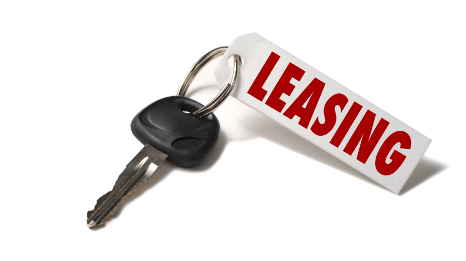White Clarke Group: Still More Pent-Up Demand for Leasing

By subscribing, you agree to receive communications from Auto Remarketing and our partners in accordance with our Privacy Policy. We may share your information with select partners and sponsors who may contact you about their products and services. You may unsubscribe at any time.
ATLANTA –
The U.S. may at last be pulling out of recession. But there are still headwinds, not least of which emanate from Washington, D.C., as the seemingly intractable gridlock in Congress is doing nothing to reduce uncertainty in the domestic markets.
This impacts all businesses and entrepreneurs, and the equipment and auto finance and leasing markets are affected as much as any. Businesses want to get on with what they do best — doing deals, expanding, making money. But confidence, and with it investment, is being constrained by the congressional impasse, which does not look like it is going to be solved by the upcoming elections in November.
Other variables include what may happen following the final ending of quantitative easing (QE) — the federal program of asset purchasing — and the prospect of interest rates rising afterwards after sitting at a near-zero level, and possible growth constraints on larger corporations that are inevitable in the later stages of the current business cycle.
Business does not need another brake on momentum, particularly as 2014 has had its ups and downs. It started with a surprise down, as extreme winter weather contributed to a sharp contraction in the economy, but the second quarter produced a strong rebound and, although a similar rate of growth cannot be expected to be maintained, the projections are for a steady, albeit gradual, increase from here.
Meanwhile, the stock markets have gone up: the important S&P 500 has risen by around 8 percent in 2014 and 20 percent in the last 12 months, and cleared the psychological 2,000 barrier more than once. However, the markets too have suffered from volatility, especially among small caps, which for many observers indicates an unwelcome degree of uncertainty. Caution affects investment planning, which in turn depresses capital expenditure on replacing equipment, but the underlying economy is still doing pretty well, and there is undeniably a great deal of pent-up demand.
Opportunities in Financing
Subscribe to Auto Remarketing to stay informed and stay ahead.
By subscribing, you agree to receive communications from Auto Remarketing and our partners in accordance with our Privacy Policy. We may share your information with select partners and sponsors who may contact you about their products and services. You may unsubscribe at any time.
The equipment and auto finance and leasing industry in the U.S. also suffered a decline in relative terms in early 2014, but, like the economy, has picked up since and is registering about 4 percent growth in new business volume (NBV) year-on-year over 2013 so far, according to the Equipment Leasing and Finance Association (ELFA), and this trend is expected to continue. ELFA research shows that equipment finance NBV grew a healthy 9 percent-plus in 2013; however, that rate is down on the previous two years.
A real highlight has been the auto sector, which has accelerated through this year with total light-vehicle sales reaching consistent levels not seen since before the credit crunch. Concerns have been raised regarding the possibility of a subprime bubble being inflated similar to the mortgage bubble that ushered in the financial crisis, but the auto market does not bear close comparison with real estate.
Leasing is playing an increasingly important role in auto finance. The upward trend over the last five years has continued impressively in 2014, with leasing now accounting for over 30 percent of all new vehicles financed.
Banks are still the main providers of finance in the auto sector, as elsewhere, but captives have grown their share considerably, and now represent more than a quarter of the total auto loan market. Dealers are thriving off the back of this. An example of successfully exploiting the boom in both leasing and subprime has been Chrysler, which reported 20 percent year-on-year sales gains for August and credited its recent growth to stepping up activity in both these areas.
Expanding an Already Mature Market
Banks are increasing market share in equipment leasing, as they appreciate the value provided by leasing in recent years. There is a question regarding the risk of market commoditization, and where innovation can occur. However, experts interviewed for the country survey expect few such problems and are confident that the market has ample room for expansion.
The equipment finance market in the U.S. may be the world’s largest and most developed, but it is part of the largest global economy, and if the entire market of goods that could be financed is taken into consideration, there is an awful long way to go before equipment finance runs out of road.
Opportunities are currently seen in transportation, construction and technology – all three of which are indicators of a growing economy. A longer-term prospect is the renewable energy market, which has been boosted by government subsidies that may or may not survive a congressional realignment, but the whole domestic energy sector has been transformed in recent times and offers financing opportunities for cost-effective alternative energy solutions.
What the market needs as much as anything is confidence, particularly concerning federal legislation or the preferred lack of it, the result of which will be a return to consistent investment. The undeniable fact is that the U.S. remains a very good place to do business.
Brendan Gleeson is group executive vice president of White Clarke Group.


